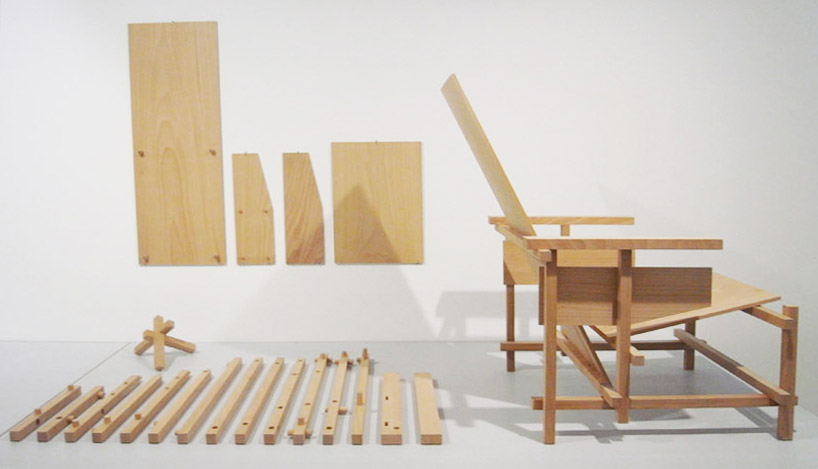
[Photo credit: designboom]
The topic of authenticity in design is a contentious one, and entrenched beliefs on the nature of what is genuine and what is fake begin early on in a designer’s education. While the issue of design authenticity can equally apply to everything from lighting fixtures to entire buildings, it is furniture that often provides the clearest examples. An architect’s academic experience requires having at the ready a handful of iconic furniture pieces, designed by a select few celebrated architects and designers, repeatedly paraded around the studio for their purity of design and timeless aesthetic. If you’re a design geek, you know the usual suspects: the Eileen Gray’s Table E1027, the Corbu’s LC-4 Chaise (cowhide please), the Eames Lounge Chair and Ottoman, and the Mies van der Rohe’s Barcelona Couch, to name a few. And to their credit, each is a functional and beautiful piece of design for the modern environment.

[Photo credit: DWR]
These designs were each created as special pieces of furniture. The look and feel of most of them are dependent on genuine leather (or cowhide) and specialized components. For the most part, we’re advocates of the originals when it comes to these pieces and others that share similar characteristics. That’s not to say that we’d run right out and spend $10,000 on the Barcelona couch, but we’d resist buying a knock-off – the replicas just don’t hit the mark.
If the issue were simply determining a preference between original or copy, it wouldn’t be much of a debate. As objects unto themselves, the originals are superior to their reproductions in most instances. The dispute occurs when the original intent of a design conflicts with its modern day raison d’être.
There is a subset of iconic furniture pieces that were originally designed not to be special or exclusive, but on the contrary, they were designed to be fabricated from a conventional kit of parts and assembled with straight-forward methods. These pieces were designed precisely to be practical to society at large and affordable for the lay-person. Decades after their creation, and for reasons that are rarely discussed, these furniture pieces are now sold at prices disproportionate to their original intent. Maybe these designs met a secret aesthetic code that warranted a higher price tag. Maybe the companies that own the rights to these original designs have limited the production precisely to create more demand and higher expense. Or maybe the production, marketing and retailing of these pieces has strayed from the intended path. While it’s difficult to determine the reasons, one thing is clear to us about this subset of designs: The finished products of these “authentic” furniture pieces don’t meet the design code of the originals; they have become expensive and exclusive. In this case, it can actually be the more cost-effective and more rapidly produced replicas that meet the original design intent. It’s often the copies that are manufactured efficiently on an assembly line and sold to the masses at sensible prices. To better illustrate the point, we’ve chosen 3 examples to discuss in greater detail.
Wassily Chair (aka Model B3 chair) designed by Marcel Breuer, Germany, 1926,
Current price: $2,425
While at the Bauhaus, Breuer designed this chair from standard tubular-steel inspired by bicycle construction. The frame was assembled by bending the tube-steel, assembling the various pieces with ordinary plumbing techniques, and attaching canvas straps (later upgraded to high-end leathers). This chair exemplifies the Bauhaus mission of reconciling art and industry by optimizing materials that were available in quantity and using prosaic methods of manufacturing.
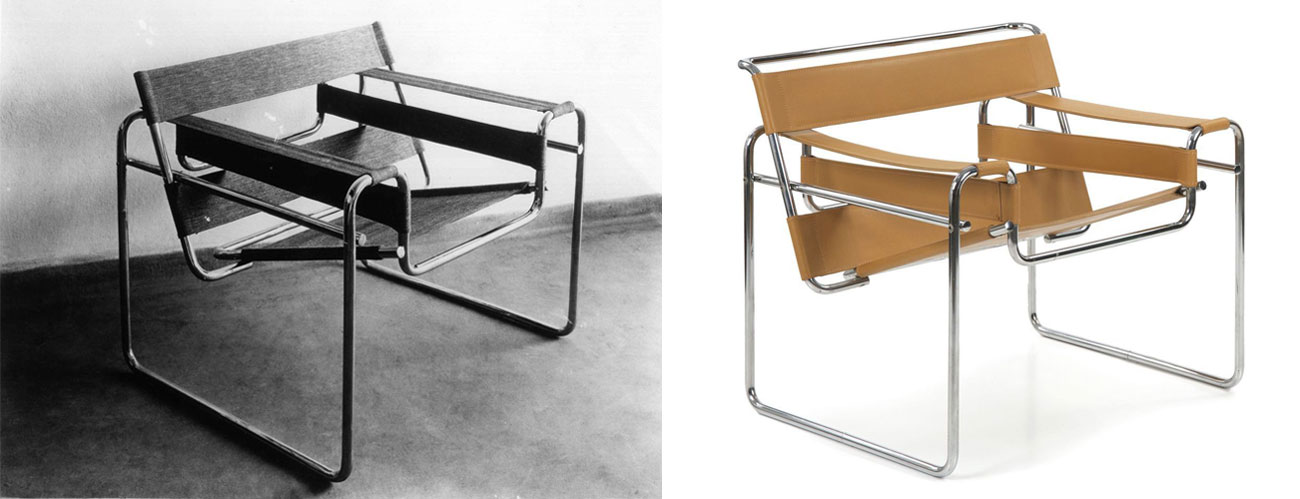
[Photo credit: Pixgood and Rubylane]
Given the ability for this chair to be mass produced from parts still considered standard, the $2,425 price tag seems a bit much. Also factor in that the chair looks and functions much better in pairs, so let’s call it an even five thousand. From our perspective, the knock-offs actually have more soul and stay true to the original intent than the authentic (see: licensed) versions available in high-end furniture showrooms. There are numerous homemade versions of this chair available and it’s also a go-to for college furniture studios.
Red and Blue Chair designed by Gerrit Rietveld, Netherlands, 1917
Current price: $3,132
A pivotal work in the De Stijl movement, the Red and Blue Chair explores spatial ideas by condensing the design down to three simple geometrical planes. It’s worth noting that the original version was constructed of beech wood and didn’t receive its characteristic paint job until the 1920’s. With its standard kit-of-parts, and simple pattern, the chair was intended for mass production.
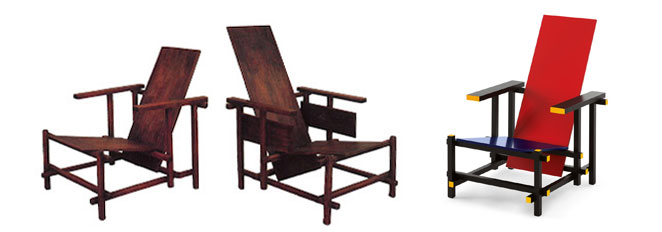
[Photo credit: Rietveld Schroder House and Cassina]
The Red & Blue Chair design has shop scraps written all over it. Don’t get us wrong, we love this chair precisely because it can (and perhaps should) be made from left-over plywood and lumber offcuts. Once the jigs are set up to cut the sticks to their correct lengths (and the dimensions are easily accessible), the assembly line is ready to crank out dozens of these beauties. A good friend of BUILD’s, Aaron Nelson, made the one below from solid purple-heart and apple-ply. Once again with this subset of iconic furniture, the replica is far more significant to us than the trademarked version.
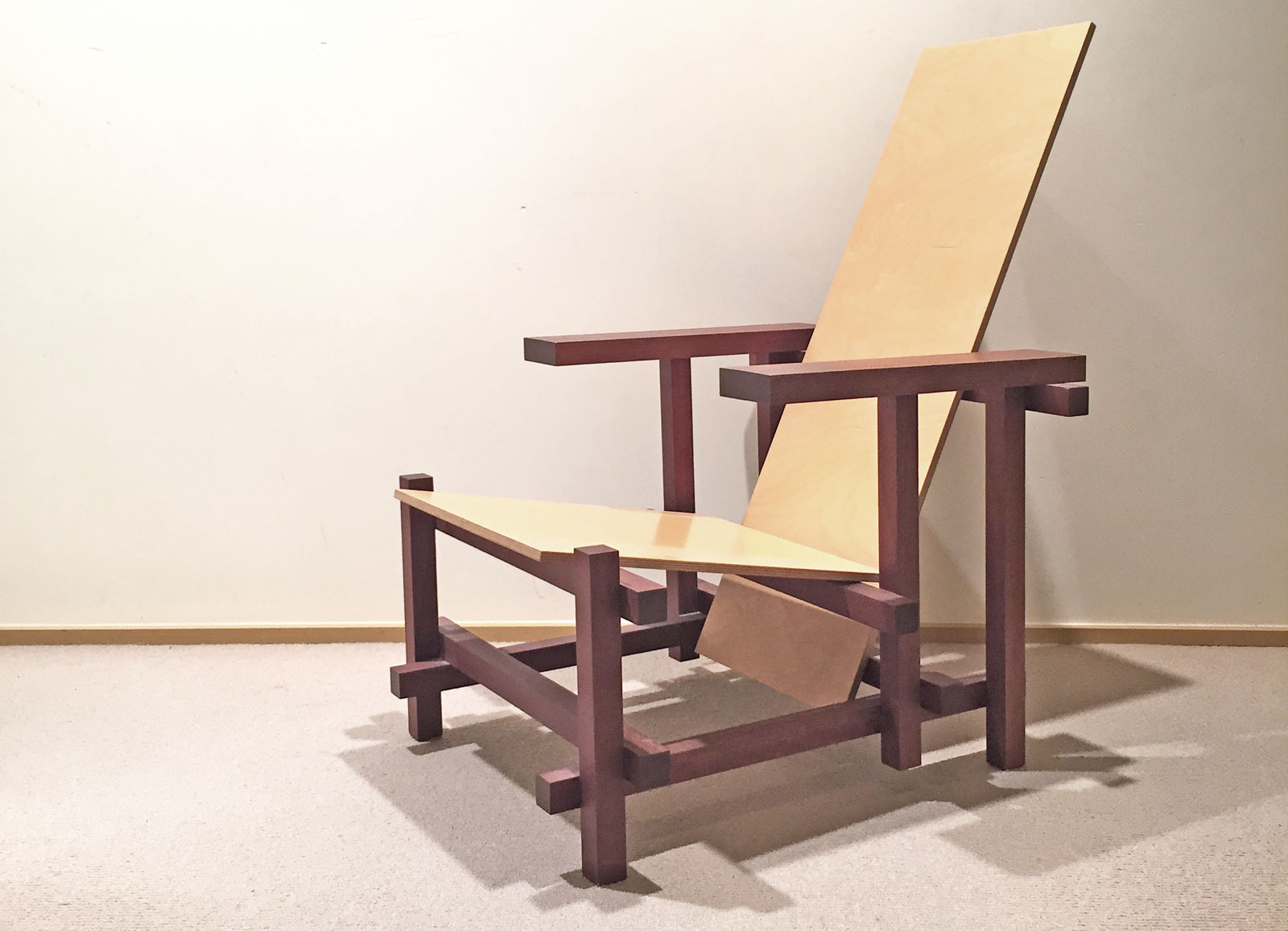
[Photo by BUILD LLC]
PP512 Folding Chair designed by Hans J. Wegner, Denmark, 1949
Current price: $4,500
Unlike the designs above, the PP512 Folding Chair doesn’t break down to a basic template composed of a standard kit-of-parts. At the same time, the price tag simply doesn’t correlate to what is a simple indoor/outdoor chair that can hang on the wall when not in use. The informal aesthetic of the chair and everyday use suggest that it could be produced far more cost-effectively.
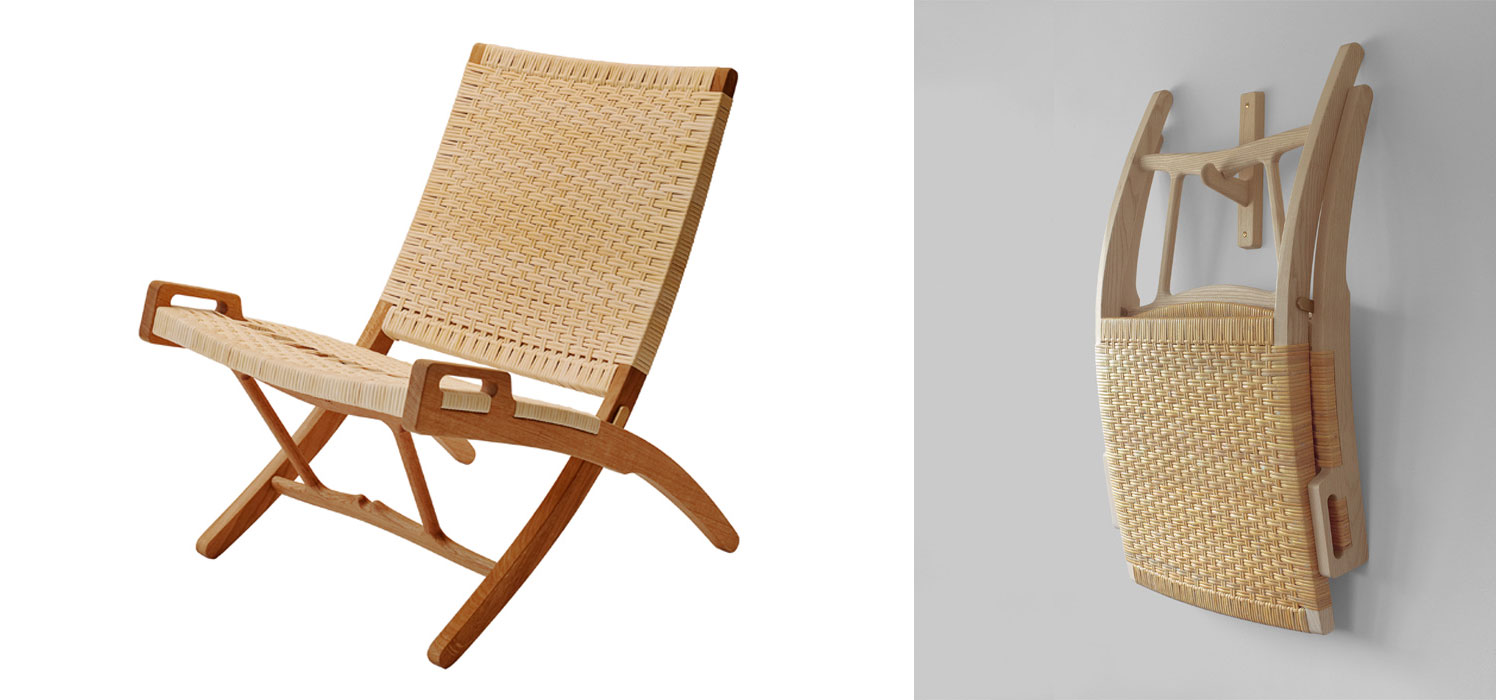
[Photo credit: TwentyTwentyOne]
We bought the knock-off version below at a yard sale for $25 back in college, before we even knew the significance of the PP512. It’s served us well for decades, and rather than someday hoping to own an original, we’d love to find a counterpart knock-off at another yard sale (although it will be a bit more than $25 now).
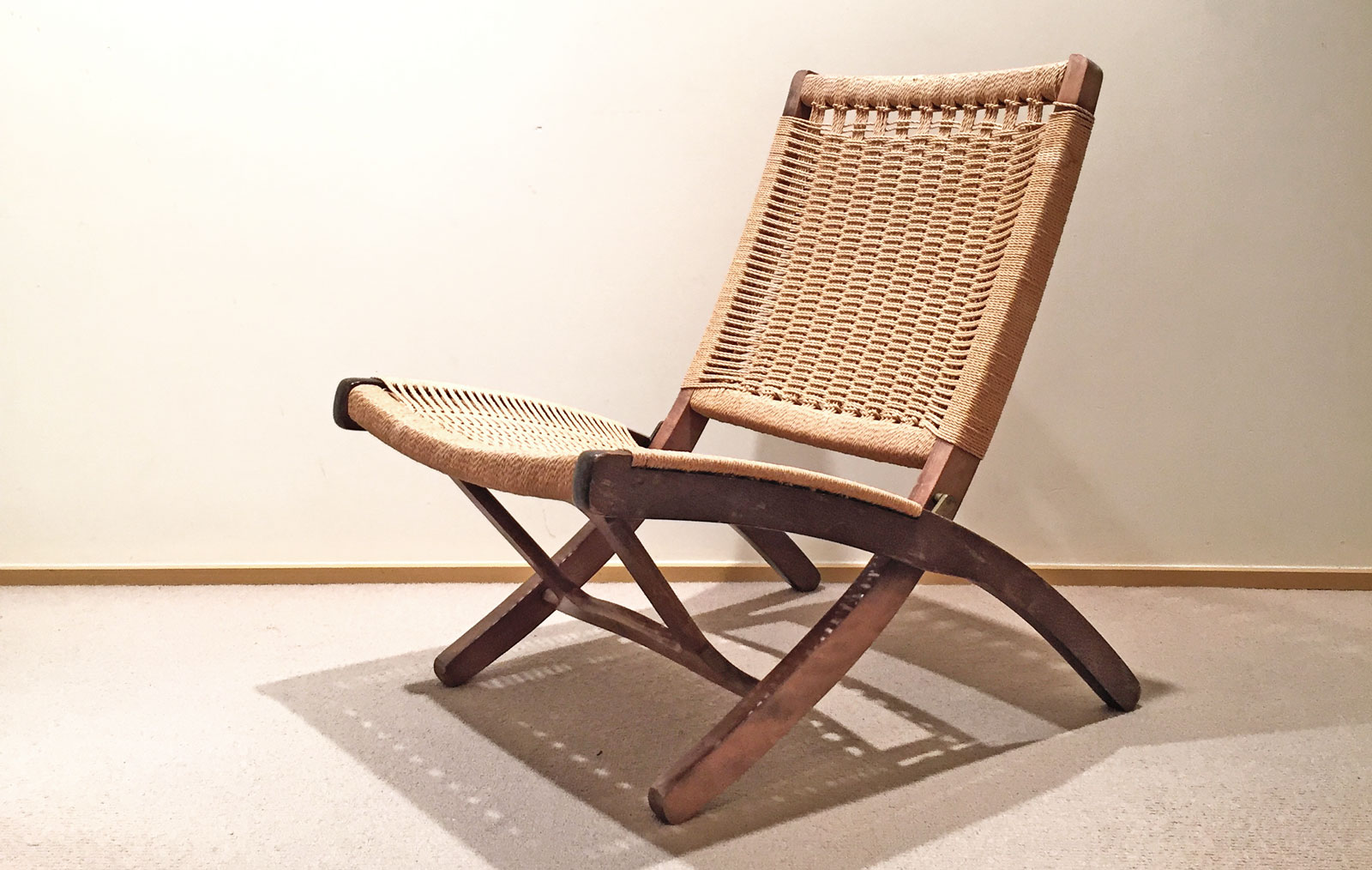
[Photo by BUILD LLC]
When design is created precisely to be distinctive or limited, we’re advocates of the more expensive originals, or at the very least, opponents of cheap replicas. But there is an important distinction to identify with designed objects when the original intent of the design is undermined by current day methods, marketing, or costs. Taking something that can be easily fabricated with simple materials and common methods and making it exclusive, elite, and expensive gets a thumbs down from Team BUILD. We’ve covered furniture in this post only to illustrate a point, but this distinction applies to design of all sorts. There are times when the knock-off can actually be more genuine than the original.
Cheers from Team BUILD





